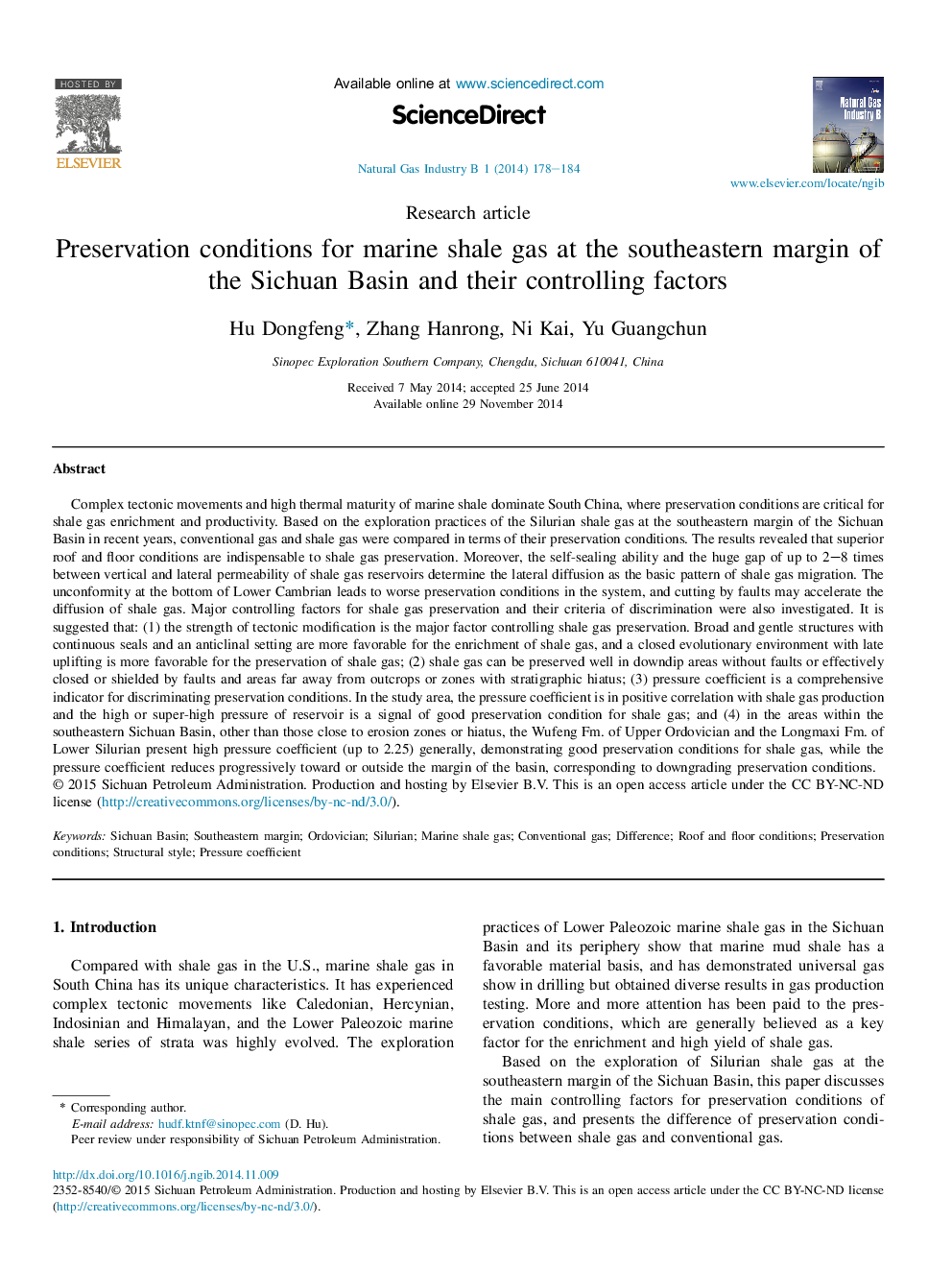| Article ID | Journal | Published Year | Pages | File Type |
|---|---|---|---|---|
| 1747867 | Natural Gas Industry B | 2014 | 7 Pages |
Complex tectonic movements and high thermal maturity of marine shale dominate South China, where preservation conditions are critical for shale gas enrichment and productivity. Based on the exploration practices of the Silurian shale gas at the southeastern margin of the Sichuan Basin in recent years, conventional gas and shale gas were compared in terms of their preservation conditions. The results revealed that superior roof and floor conditions are indispensable to shale gas preservation. Moreover, the self-sealing ability and the huge gap of up to 2–8 times between vertical and lateral permeability of shale gas reservoirs determine the lateral diffusion as the basic pattern of shale gas migration. The unconformity at the bottom of Lower Cambrian leads to worse preservation conditions in the system, and cutting by faults may accelerate the diffusion of shale gas. Major controlling factors for shale gas preservation and their criteria of discrimination were also investigated. It is suggested that: (1) the strength of tectonic modification is the major factor controlling shale gas preservation. Broad and gentle structures with continuous seals and an anticlinal setting are more favorable for the enrichment of shale gas, and a closed evolutionary environment with late uplifting is more favorable for the preservation of shale gas; (2) shale gas can be preserved well in downdip areas without faults or effectively closed or shielded by faults and areas far away from outcrops or zones with stratigraphic hiatus; (3) pressure coefficient is a comprehensive indicator for discriminating preservation conditions. In the study area, the pressure coefficient is in positive correlation with shale gas production and the high or super-high pressure of reservoir is a signal of good preservation condition for shale gas; and (4) in the areas within the southeastern Sichuan Basin, other than those close to erosion zones or hiatus, the Wufeng Fm. of Upper Ordovician and the Longmaxi Fm. of Lower Silurian present high pressure coefficient (up to 2.25) generally, demonstrating good preservation conditions for shale gas, while the pressure coefficient reduces progressively toward or outside the margin of the basin, corresponding to downgrading preservation conditions.
